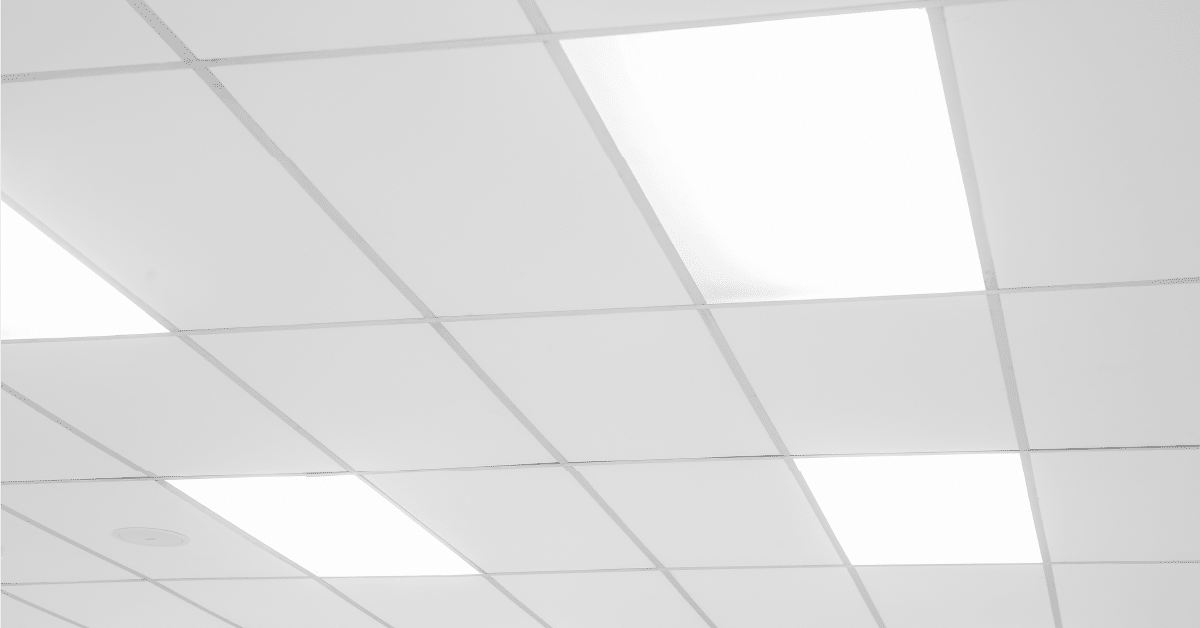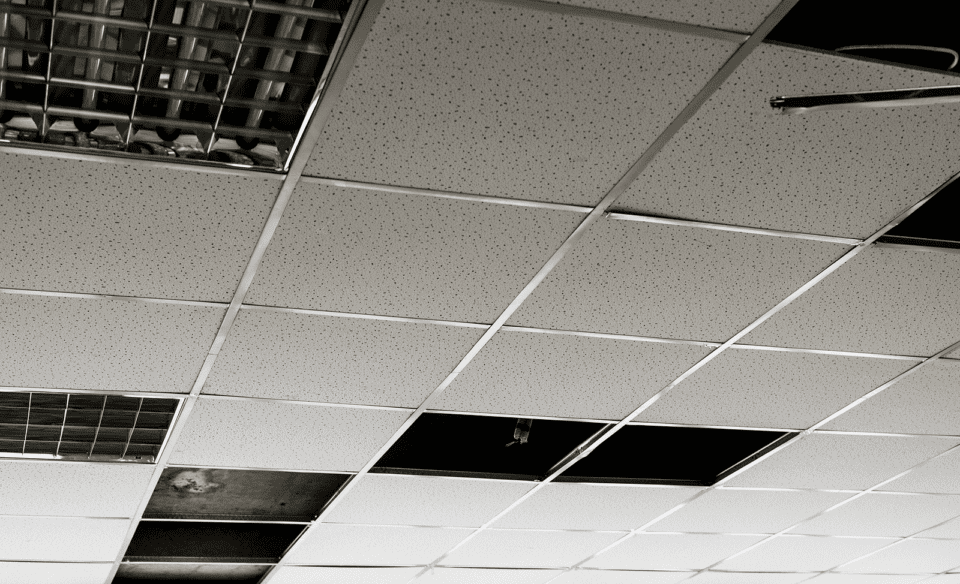Suspended Ceiling Fixings
Aside from fixings for plasterboard and partitioned walls, there are also dedicated fixings required for suspended ceilings.
Suspended ceiling fixings are necessary for the ceiling grid, tiles and accessories used in a suspended ceiling - either during the installation process or simply during maintenance and modification. When you install a suspended ceiling using a ceiling kit or individual components you will also need several tools - such as tin snips or a utility knife, to work with the ceiling grid, tiles and fixings.
What Are Suspended Ceiling Fixings?
Fixings for a suspended ceiling are much like fixings for plasterboard walls, but they play a significant role in the structure and support the ceiling’s weight being suspended. Aside from the grid, fixings will also help to support hanging signs and full panels in the system so they need to be very reliable and strong.
What Types of Suspended Ceiling Fixings Are Available?
Suspended ceilings can be quite complex, so fittings and fixings are commonly found in all areas within the structure of the ceiling system. As a result, many types of suspended ceiling fixings are available, which are used to support the many different components of the ceiling that they are supporting.
Although there are many types, most suspended ceiling use fixings that typically include the following:
- Hangers: Hangers hook onto the grid and suspend the ceiling tiles or ceiling panels in place. It is simple and easy to install hangers over a large space, evenly spaced out across the existing ceiling to the far side of the room, before attaching the tiles.
- Clips: When you install a drop ceiling your grid might make use of a clip-in system, these clips will help the ceiling grid securely grip each side of the ceiling tiles and suspend them above the space. Some clips are made from plastic while others use strong plastic.
- Connectors: Several connectors such as cross tees will add critical support for your ceiling grid. With a few long or short connectors brace each part of the main structural support of the ceiling together. Connectors are crucial in determining the ceilings overall strength.
- Edge profiles: If you have a suspended ceiling tile with a tegular edge, which allows the tiles to stick out below the ceiling, you might want an angular profile for a smoother look - but some tiles have square edges. You can manage the type of edges in your tiles with different profiles.
- Caddys: A caddy fits securely to the wall and provides a ‘base’ for the frame to anchor itself. Caddy’s may also be useful for cable management within the ceiling grid. Caddies are also good for hanging signs, smoke detectors and even CCTV cameras in commercial settings.
- Brackets: A simple, strong, steel bracket will be an important fixing for securely bracing the edges of the frame to the walls at the side of the room. Brackets have many uses in different parts of commercial wall and ceiling installations, as well as in steel frame systems.
- Nuts and bolts: All parts of the ceiling grid will normally require large numbers of nuts and bolts throughout. Depending on the size of your drop ceiling you could end up using hundreds or possibly even thousands of nuts and bolts. Nuts and bolts may also be used for many other tasks.
- Suspension wire: Possibly the most important fixing, which is crucial for the safety of the ceiling grid, the strong wire is fixed to the ceiling joists in the cavity space above the suspension grid. The suspension wire fixing only secures the grid system itself, not the ceiling tiles.

Other Types of Accessories
The above are the most common fixings, used in most types of suspended ceilings, but other commonly required accessories include the following:
- Cavity barrier: A cavity barrier works as a way to close the space inside a cavity, usually for the aim of fire protection. Cavity barriers are extremely important for large installations - where the consequences of a fire can be quite substantial. Cavity barriers look like large slabs of fireproof insulation.
- Galvanised sections: Galvanised sections are the main ‘frame’ part of the grid and are also one of the most used components during the installation of a suspended ceiling. Different sizes of metal channels and angle products will be necessary for installing the complete frame.
- Insulation pads: Putting thermal insulation pads above the suspended ceiling, invisibly tucked in the cavity space, will stop cold air from collecting and also help to prevent fire. For very noisy areas special acoustic insulation pads can be used to absorb sound, as well as insulate the room to encourage a comfortable space.
- Lighting: Lighting is a crucial part of almost every suspended ceiling, and all lights will need to be securely fixed into the frame with nuts and bolts. Sometimes instead of traditional lighting, you will use LED panels - LED panels can be easily fixed in a grid as they are exceptionally lightweight.
You might find yourself coming into contact with some or all of the fixings and accessories in your particular installation. However, you will probably also need some of the following tools when working with your suspended ceiling products:
- Jointing kits: Jointing kits can greatly improve the process of installing your suspended ceiling, and also give you the ability to cover over any unsightly fixing details. A jointing kit is great for smaller scale or DIY projects, as they contain everything that you need in one neat package.
- Utility knife: When working with suspended ceiling fixings you will most likely find that a trusty utility knife works well - and for all manner of other jobs. For ceilings, a knife helps with cutting edges in ceiling tiles. You may find a tile that needs to be shorter for the grid at the side of the room.
How to Fix Suspended Ceiling Fixings
As there are so many different types of suspended ceiling fixings there is no single method or rule on how to fix them. However, the following are a couple of general best practices you can use:
- Choose known manufacturers: When buying fixings remember that quality is key. Many reputable companies that make ceiling tiles or grids will also make fixing accessories. For example, the jointing kits in the previous section are made by the well-established British Gypsum brand.
- Test one of each new batch: When you buy fixings you could be buying them by the 100s. As a result, it is good to use one just for a bit of testing on the overall strength and durability. Testing a potential fixing will make it much easier to determine its limitations.
- Get a good thread connection: You need to make sure the thread of your fixings, assuming you are screwing them in and not clipping them on, engages properly with the ceiling grid - as much of the strength of the fixing will depend on the initial thread contact with its place in the frame.
Although some types of fittings can be trickier than others, if you are familiar with working with plasterboard, suspended ceiling fixings should seem quite familiar. Competent DIYers will find they can recognise the fixings and understand how to use ceiling kits with a little effort.
In Summary
If you need to use suspended ceiling fixings you will have better luck when you use quality products. There are many types of fixings, which are used to support each component of the ceiling - providing sufficient support for the weight of the ceiling grid, tiles or hanging signs.
Our Range of Quality C24 Timber
For contractors and builders working with suspended ceilings, we offer professional trade accounts to streamline your purchases. Our account holders are assigned a personal account manager who can assist with large or custom orders. This includes sourcing speciality ceiling tiles, grids, and hardware that may not be listed on our website by leveraging our network of suppliers. Sign up for a professional account through our website today to save time and money on your upcoming ceiling jobs, or contact us using the form below.









